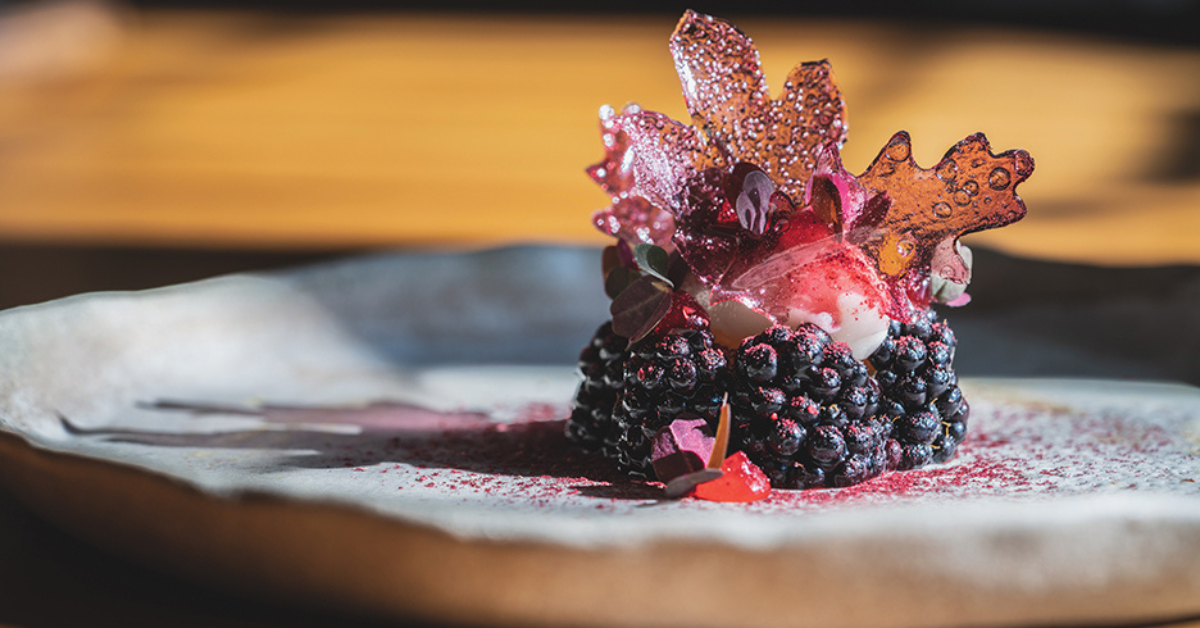Exclusive writing instruments elevate the tradition of putting pen to paper — a ritual technology cannot erase — into fine art.
Writing a check or signing a document is generally a routine task, one far too often facilitated by an 89-cent piece of plastic and aluminum. But a bejeweled, limited edition writing instrument can transform a simple signature into a truly artistic expression.
Nancy Olson, a leading authority on fine writing instruments, reports, “Unlike many other luxury collectibles, a pen is portable, user-friendly and has a cultural element because of its link to writing and the arts.” Olson, who is also a prominent commentator on timepieces, notes the parallels between the two instruments, stating, “Pens and watches are both small, mechanical objects that provide a healthy hit of extravagance and enjoyment when worn or used.”
Among Olson’s favorite designers are German manufacturers Pelikan and Montblanc, the latter the high-end brand with the greatest mainstream name recognition. Montblanc pens have long been considered luxury items, but many are surprised to learn that some of the company’s limited edition writing instruments cost not hundreds, but hundreds of thousands, of dollars.
Montblanc collaborated with elite jeweler Van Cleef & Arpels on a $730,000 pen bejeweled with diamonds, rubies, emeralds, and sapphires to commemorate both companies’ 100th anniversaries in 2006. The manufacturer’s Meisterstück Solitaire Royal LeGrand fountain pen is copiously embellished with more than 4,600 diamonds and valued in excess of $200,000.
Olson reports the qualities collectors admire most in pens are craftsmanship, scarcity and the ability to convey a story.
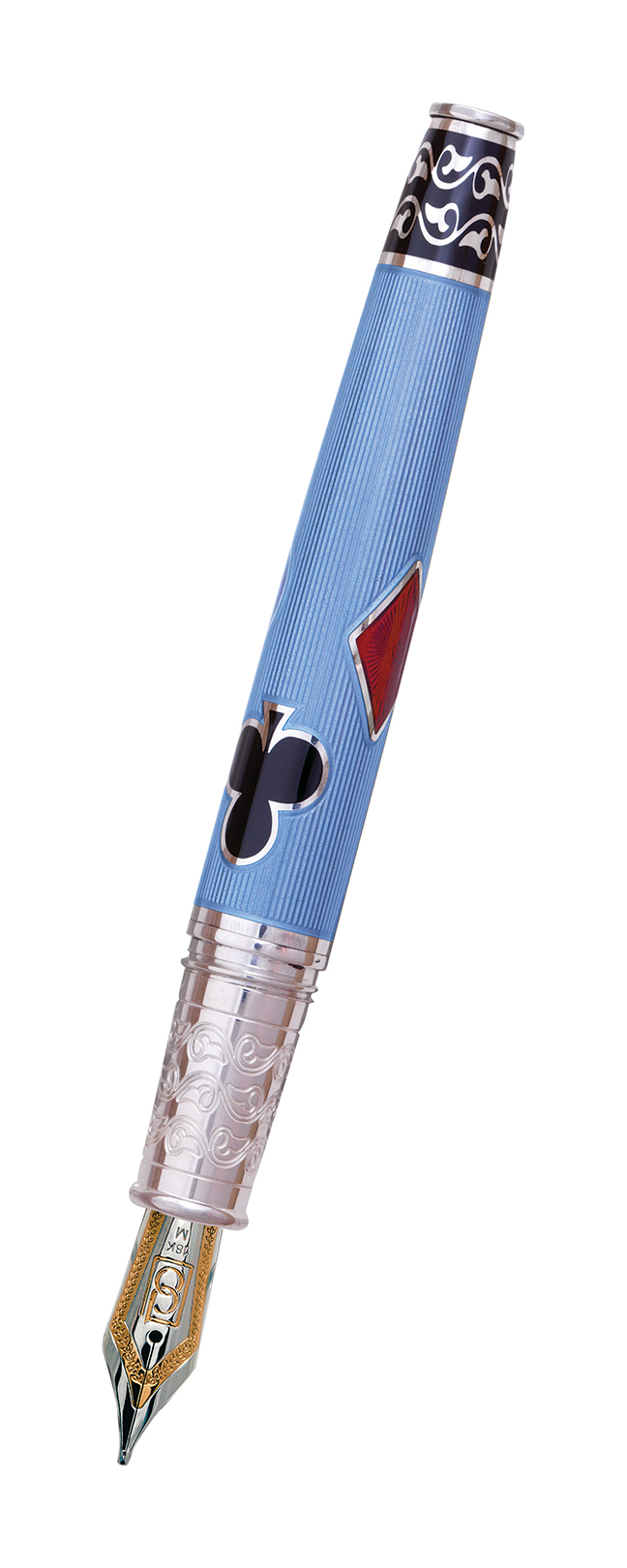
Les Quatre Couleurs from David Oscarson commemorates the evolution of playing cards. Courtesy of David Oscarson.

The 1010 Timekeeper by Caran d’Ache celebrates the watchmakers that share the company’s hometown of Geneva. Courtesy of Caran d’Ache.
Few brands have mastered storytelling better than St. Louis-based David Oscarson, whose eye-popping writing instruments encompass a remarkable diversity of themes. In addition to celebrating the natural world, art or architecture, Oscarson pens commemorate historic figures such as the Romanovs of Russia, Lewis & Clark and Sir Alexander Fleming, the bacteriologist who discovered penicillin. Most Oscarson issues are priced at about $5,900, but special editions command more than $250,000.
One David Oscarson pen — a blue and silver piece featuring the Star of David and the Three Crowns of Sweden — honors Raoul Wallenberg, the Swedish diplomat who harbored thousands of Jews during the Holocaust. The limited production of each theme often involves a bit of trivia, such as the 63 pens honoring Alfred Nobel (the philanthropist’s age when he died). For most David Oscarson pens, enamel is applied over metal manipulated through the painstaking technique of guilloché, an ornamentation process pioneered by Fabergé.
“There aren’t a lot of choices for gentlemen who like accessories,” states Oscarson. “Beyond wristwatches, there are very few pieces of men’s jewelry that are sustainable in style,” adds the industry veteran.
A one-of-a-kind special edition fountain pen from the company, crafted from solid 18-karat gold and encrusted with nearly 35 carats of white, yellow and caramel diamonds, has been offered on the resale market for $755,000.
“I judge a manufacturer by the quality of its pens and its creativity in putting a fresh face on what, in essence, is a very small canvas,” says pen commentator Olson. She cites Caran d’Ache’s 1010 Timekeeper, a limited edition that cleverly pays homage to the art of watchmaking, the industry that dominates the company’s hometown of Geneva.
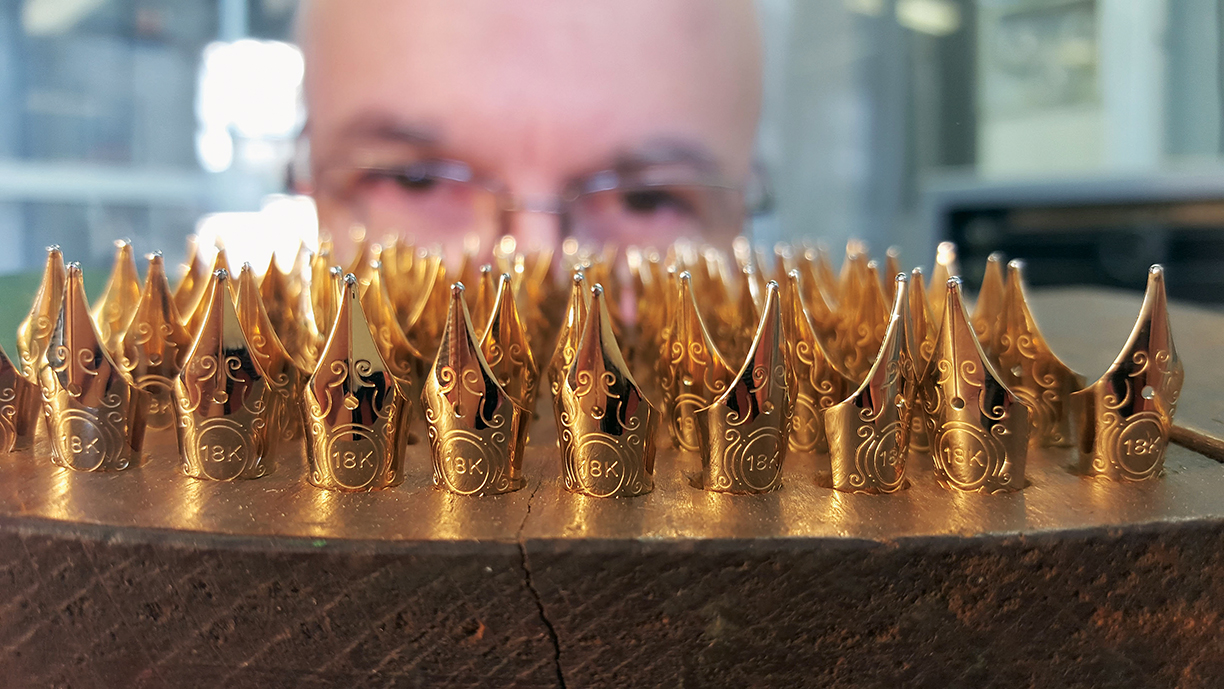
That fountain pen ($11,500) features a reinterpretation of the elements of a watch dial. Its silver- and rhodium-plated cap was inspired by watch strap design and a piston pump with a ruby accent is reminiscent of a watch’s winding crown. This model follows a 2008 limited edition of ten 18-karat gold 1010 pens, currently priced on the resale market at about $150,000.
Caran d’Ache also produced an 18-karat gold fountain pen — another piece valued in the hundreds of thousands of dollars — sheathed in more than 4,100 brilliant diamonds and accented by a band of 108 emeralds. This unique writing instrument, whose precious stones were set by Geneva jeweler Pierre-Yves Bonzon, took about six months to complete.
Gregory Hengesbaugh, national sales manager for Creative Art Materials, Ltd., the exclusive distributor of Caran d’Ache in the U.S. and Canada, reports the venerable firm enjoys a worldwide cult following.
“The brand benefits from Swiss manufacturing traditions, whose exacting precision in watchmaking carries over to fine writing instruments,” says Hengesbaugh.
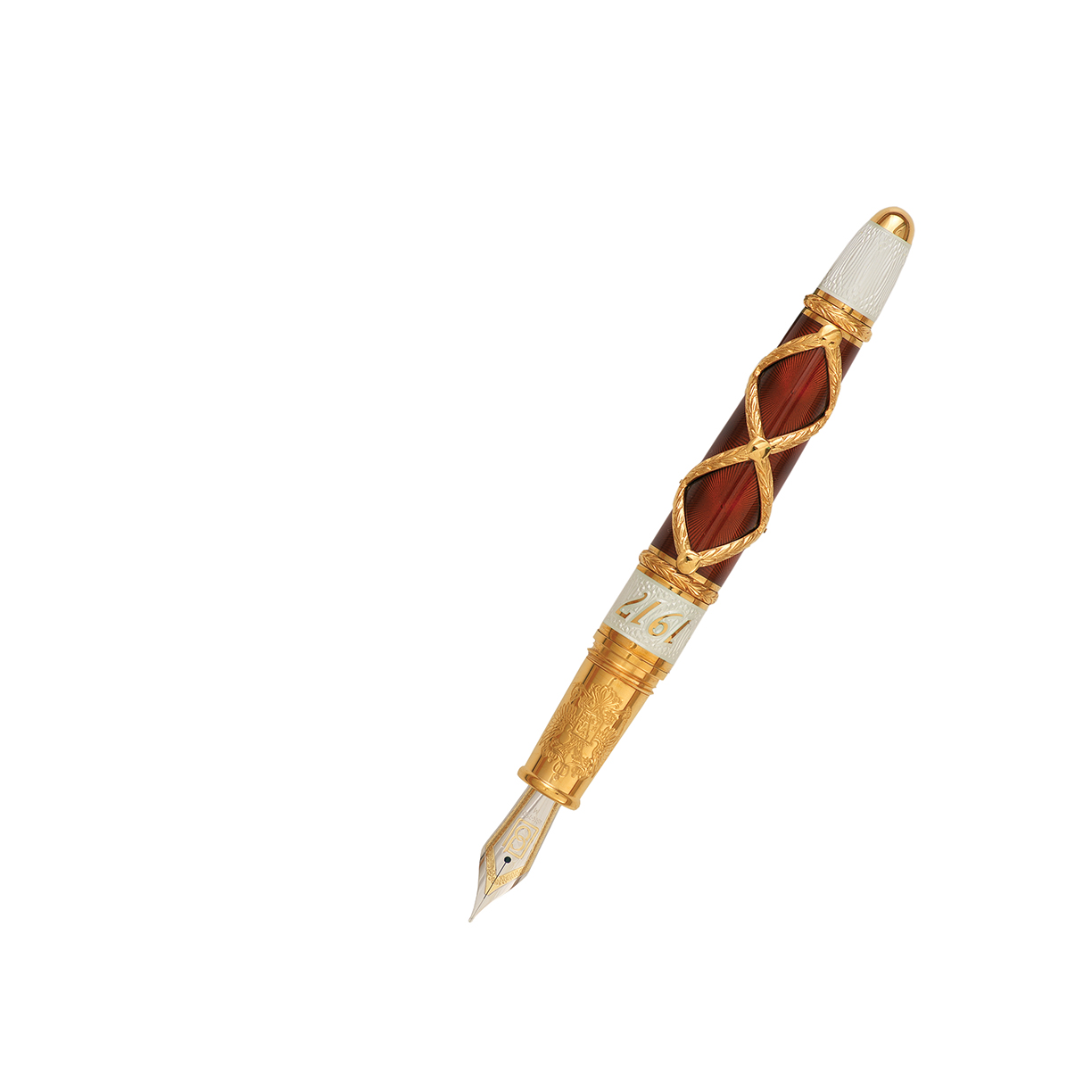
Top: Italian manufacturer Aurora is renowned for its meticulous craftsmanship. Courtesy of Aurora.
Above: David Oscarson’s elegant Russian Imperial series reflects techniques pioneered by Fabergé. Courtesy of David Oscarson.
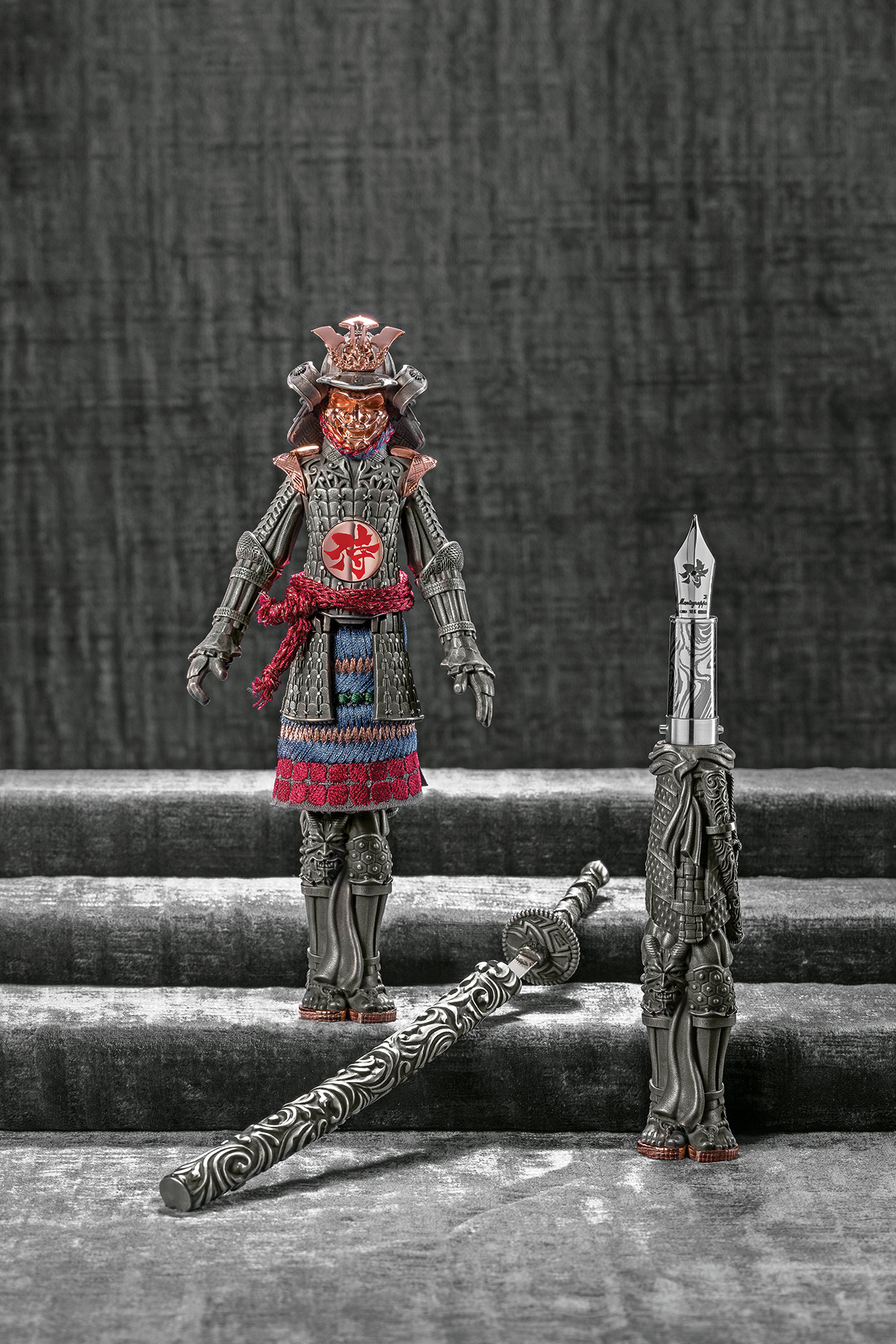
The limited edition samurai fountain pen reflects Montegrappa’s elaborate themes. Courtesy of Montegrappa.
No company on the planet celebrates the pen as an objet d’art as well as Montegrappa, Italy’s oldest manufacturer of fine pens. Last year it released a limited edition Samurai fountain pen ($15,000) that is a wealthy grown-up’s version of a toy soldier. Each of the 177 sterling silver sets (packaged in a black lacquered box) includes an armored warrior, along with a katana sword case that contains a letter opener.
|
Aurora |
|
|
Caran d’Ache |
|
|
David Oscarson |
|
|
Montblanc |
|
|
Montegrappa |
|
|
Pelikan |
|
|
Tibaldi |
Prices of limited edition luxury pens can be stratospheric, but the $8 million reportedly paid at a Shanghai charity auction has remained a safe record since 2010. Commanding that astonishing figure was the Fulgor Nocturnus from Italian manufacturer Tibaldi (a subsidiary of Montegrappa), copiously embellished with 945 black diamonds and 123 rubies.
Aurora, another venerable Italian pen maker, claims its Diamante fountain pen — whose graceful platinum form is sheathed in 1,919 De Beers diamonds totaling 30 carats — is the most exclusive writing instrument in the world. Almost too exquisite to use, just a single Diamante, priced at more than $1.4 million, is available each year.
Nancy Olson reports many collectors place a premium on the provenance of pens, collecting almost everything produced by a specific brand. Acknowledging pen aficionados’ diverse motivations, she states, “Some use all the pens in their collections and really appreciate the art of writing while others keep their pens in their original boxes, never to see a drop of ink!”
Either way, luxury writing instruments are in no danger of going out of style. “There’s something about a fountain pen that’s majestic,” suggests pen maker David Oscarson.
Artist Concetta Antico sees the world in 100 million colors.
Concetta Antico sits down for lunch at a local cafe, after settling on smoked salmon and a strawberry salad. Before eating, she takes a moment to acknowledge the array of color in front of her: the blue-violet of the salmon, the thousands of reds bouncing around the strawberry and the light turquoise surrounding the seeds. “I promise you, I am not high!” she says, “I just truly see what I am looking at.”
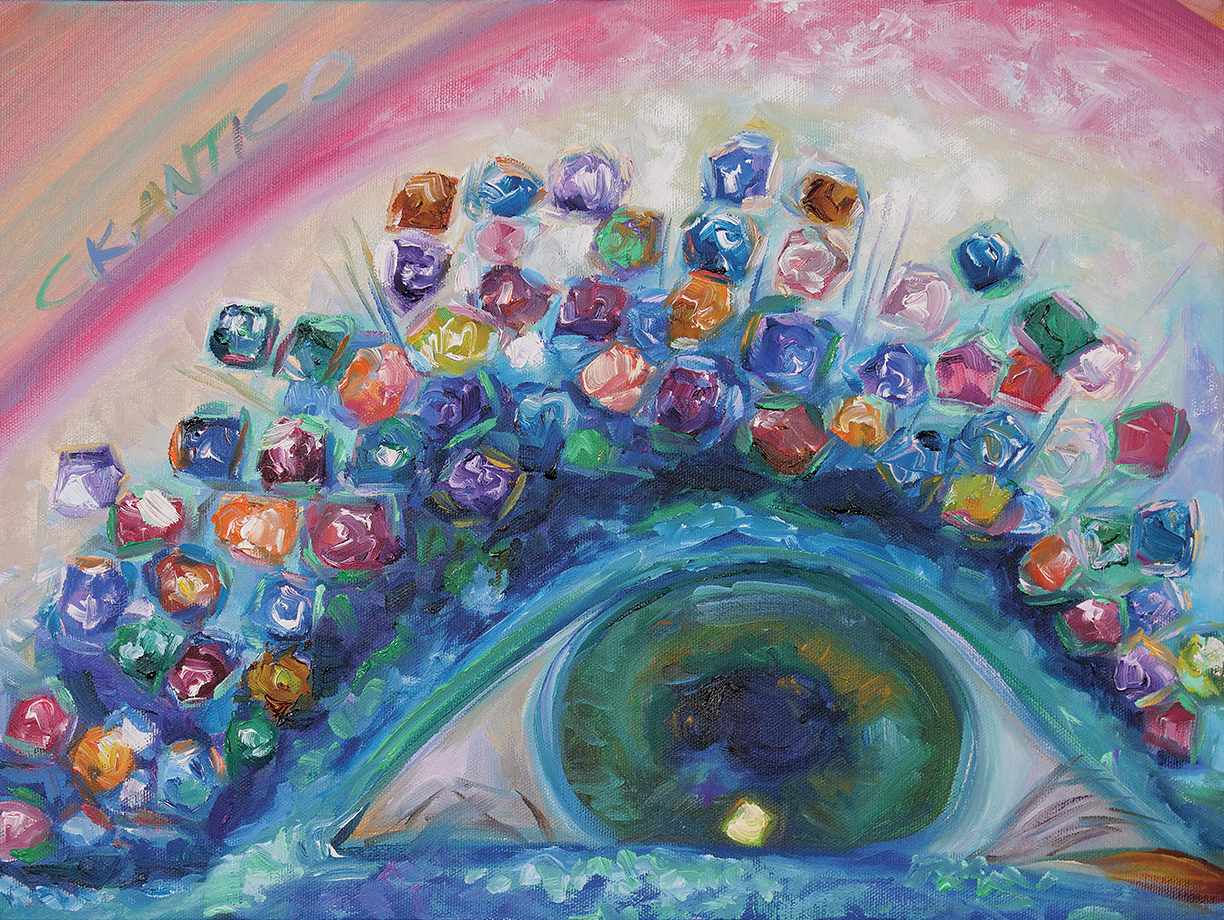
Super Vision Mutation 12 X 16
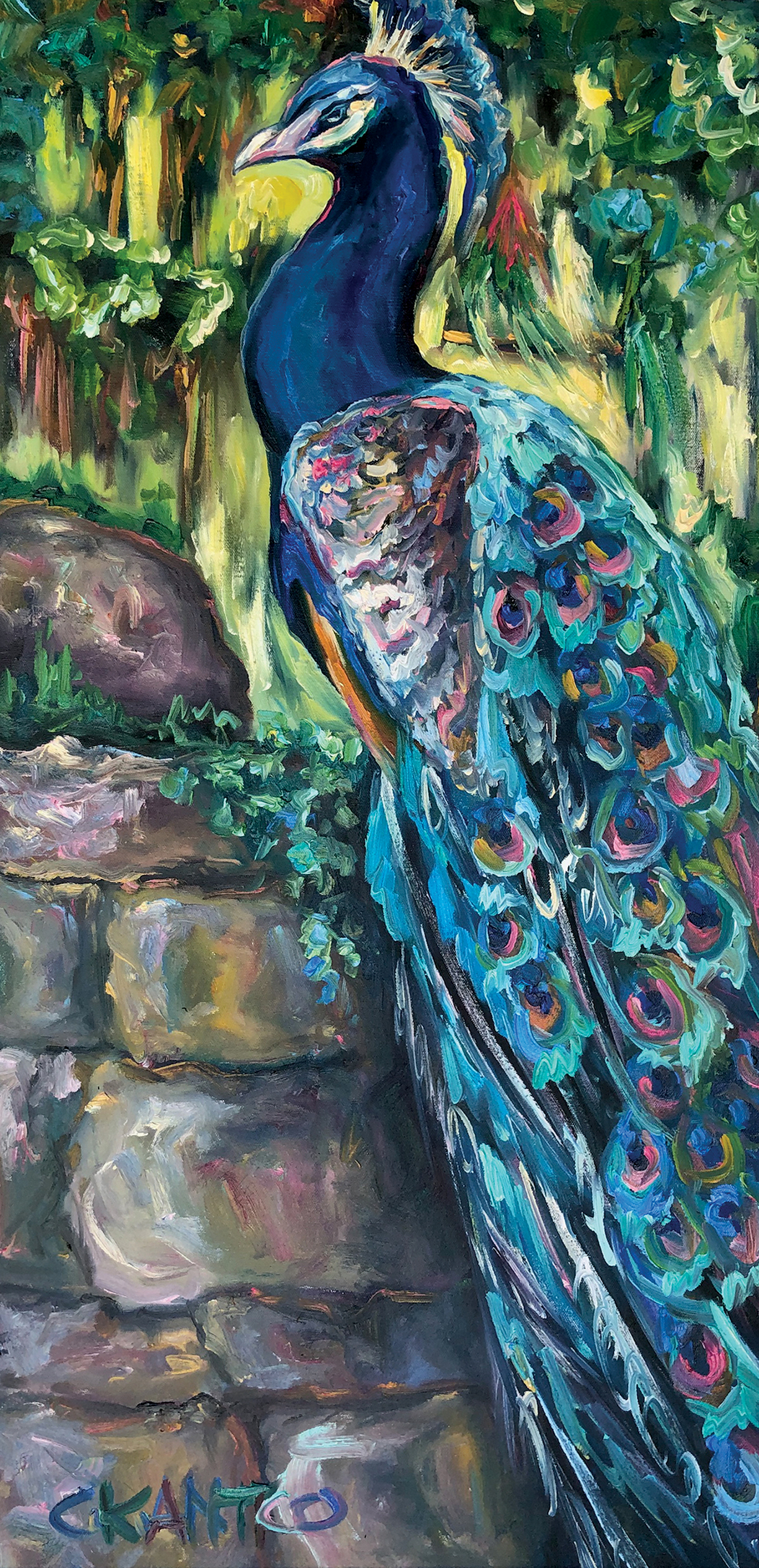
Persephones Peacock in the Garden of Paradise 8 X 36
Better known as “The Color Queen,” Antico sees pinks, blues and violets in the green grass, an array of colors glistening off the white snow, and hundreds upon hundreds of colors within a rainbow. And they’re not just a figment of her imagination: her rare, genetic gift of heightened sight allows her to see almost 100 million more colors than what meets the average human eye.
In addition to being an artist, teacher, and color consultant, Antico is what scientists call a “tetrachromat,” meaning Antico’s eyes contain a rare genotype that provides a fourth receptor as opposed to the usual three, more common in women than men. With this, Antico’s tetrachromatic potential reaches up to 100 million colors, 10 times more than the average 1 million.
For now, Antico is the only authenticated tetrachromat artist on Earth, with 1,000 internationally acclaimed pieces of art and features in Reader’s Digest, Vogue, New York Magazine, and more.
Antico is originally from Australia, and was drawn toward art and color at a very young age. At age 8, her mother recognized her potential to become a famous artist, constantly showing support for Antico’s art. At age 16, she left home to cope with her mother’s passing, winding up in Los Angeles.
“I am a bit of an adventurer,” she says, “Sydney got too small for me. I was heading to work in Canada, I stopped in L.A., and it entranced me.”
Despite her hardships, she always kept her deep passion for art at the forefront of her life and career. Antico knew she was meant to paint professionally, and so she began teaching in San Diego, ultimately instructing 25,000 budding artists in oil painting.
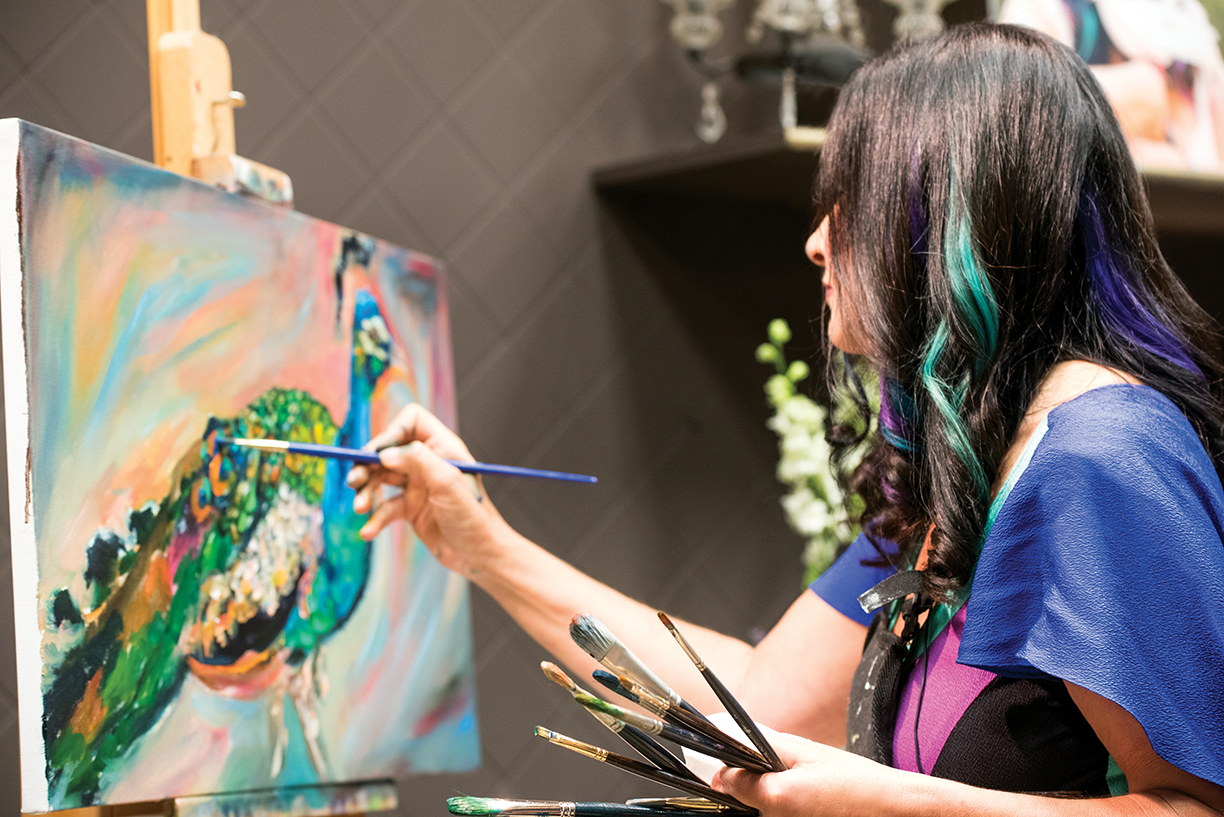
Artist Concetta Antico works on a piece named Iridescent Eyes… Charlie The Peacock 18 X 36
“Oil painting makes you healthier, and if we surround ourselves with beauty and happy spirits, we will be in a constant state of color euphoria.”
While teaching, Antico would point out the colors she sees in everyday objects and receive mixed reactions from her students. She says, “My students would tell me, ‘We don’t see that color that you see!’ I’d be confused, but then I educated my students to see a little more color.”
It wasn’t until a buyer of Antico’s, who happened to be a scientist, realized Antico could be a tetrachromat. Then, she began to understand her ability to see millions of colors. “I always thought I was different and unique,” says Antico. “The way I do things, what compels me, the way I painted … I didn’t realize that I could see and create colors like a computer.”
In late 2012, Antico was evaluated both genetically and behaviorally by Jay Neitz, Ph.D., a world-renowned leader in color vision. She soon discovered she was in fact a tetrachromat, and possessed an incredible genetic gift that affects only 2 to 3 percent of the world’s population.
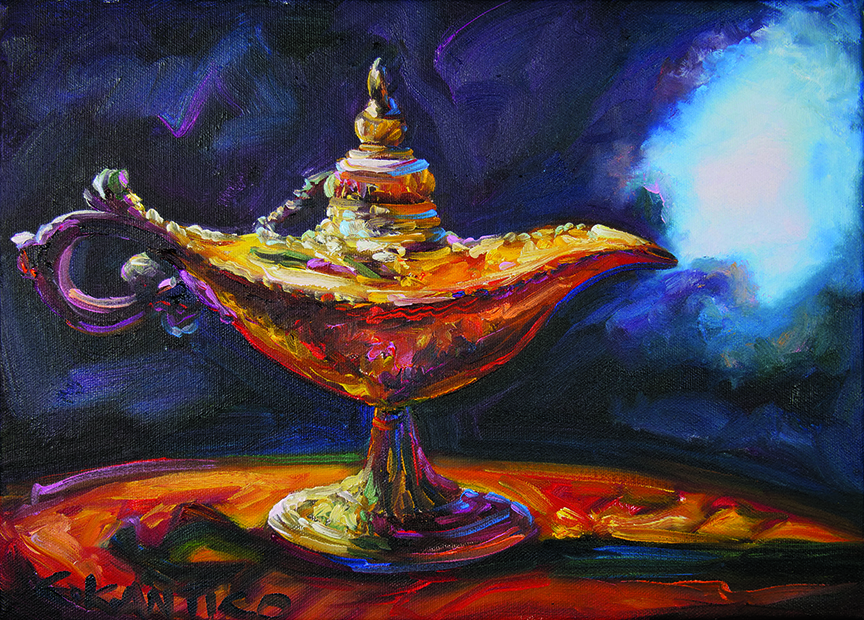
Who’s Your Genie 10 X 14
“It was just another part of the uniqueness of Concetta,” she says. “The gift is made up of my mother, her vision for me, how she put red and blue lights in the swimming pool to make lilac light, my high school that was big on art, my genetics, my brain, and my own passion, ambition and drive.”
Today, Antico wants to use her gift to make the world a better place, truly treasuring the world around her. In an interview with Stanford University, Antico said that, “enhanced color created enhanced joy.” She is constantly happy and joyful, happy to wake up and see trees and sun.
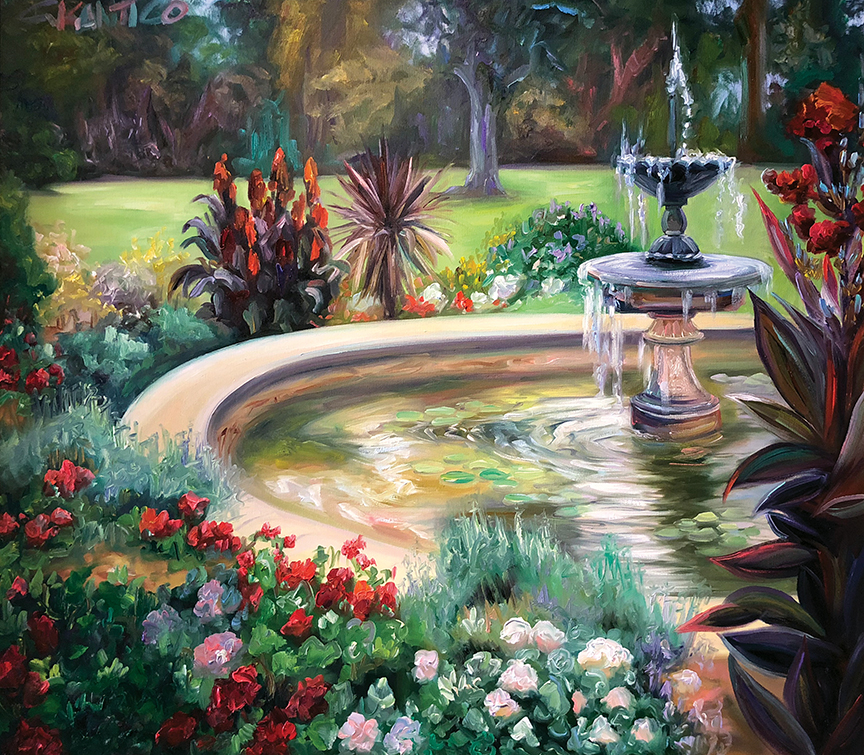
Reflecting Pool of Narcissistic Love-Vaucluse House-Sydney 30 X 36
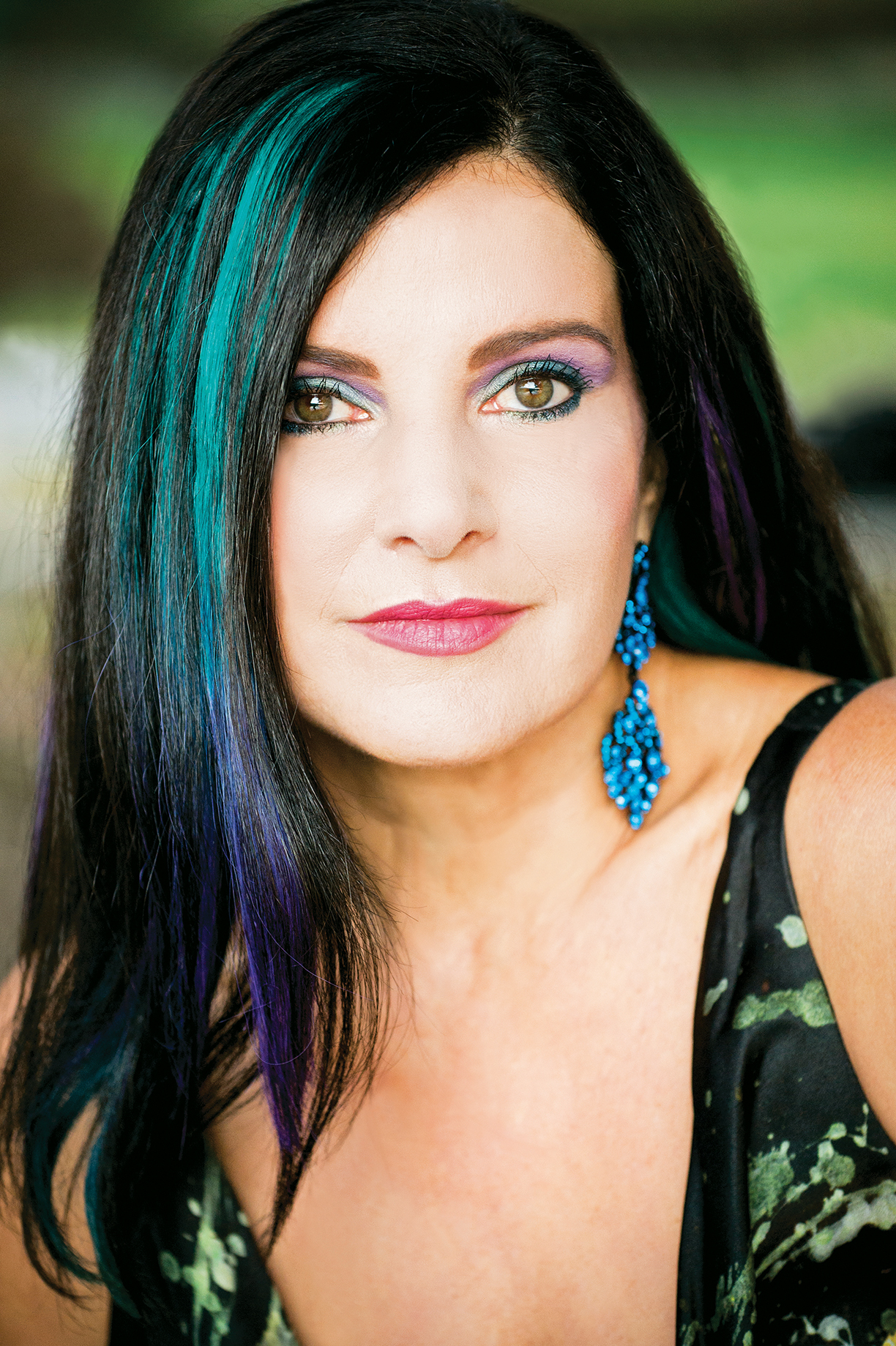
“Oil painting makes you healthier, and if we surround ourselves with beauty and happy spirits, we will be in a constant state of color euphoria,” she says. “My gift makes me so excited to paint, look, share. Color has made me joyful, and has only enhanced my life. There are no disadvantages to beauty and color.”
Antico has a wide range of muses, as she aims to paint whatever captivates and moves her. Her paintings are divided into two categories: “earthly delights,” which encompasses everything on earth that she paints, and “otherworldly wonders,” which includes galaxies, magic and more. She often leans toward the ethereal subjects such as mystic skies and otherworldly galaxies. “Not people, though. We’re just not that attractive,” she jokes.
For those with normal sight, a place like a grocery store or a highway are simply as they seem. But for Antico, she is able to see past the veil and see further into the typical. “I’m captivated with the sky and trees beyond the freeway. I’m hyper-focused on beauty around me.” Sunsets, for example, are a religious experience for Antico, with the amount of splendor and color that they produce. “I am very blessed. I wake up every day and am so elated to see what I see and do what I do,” she says.
One of Antico’s main beliefs is that everyone has gifts, not just her, and that they should all be used to better our world. “Media can be dark, and we need light,” she says. “I want to use my platform for that. I have a place as ‘The Color Queen,’ and I feel that I can make people see their worlds differently.”
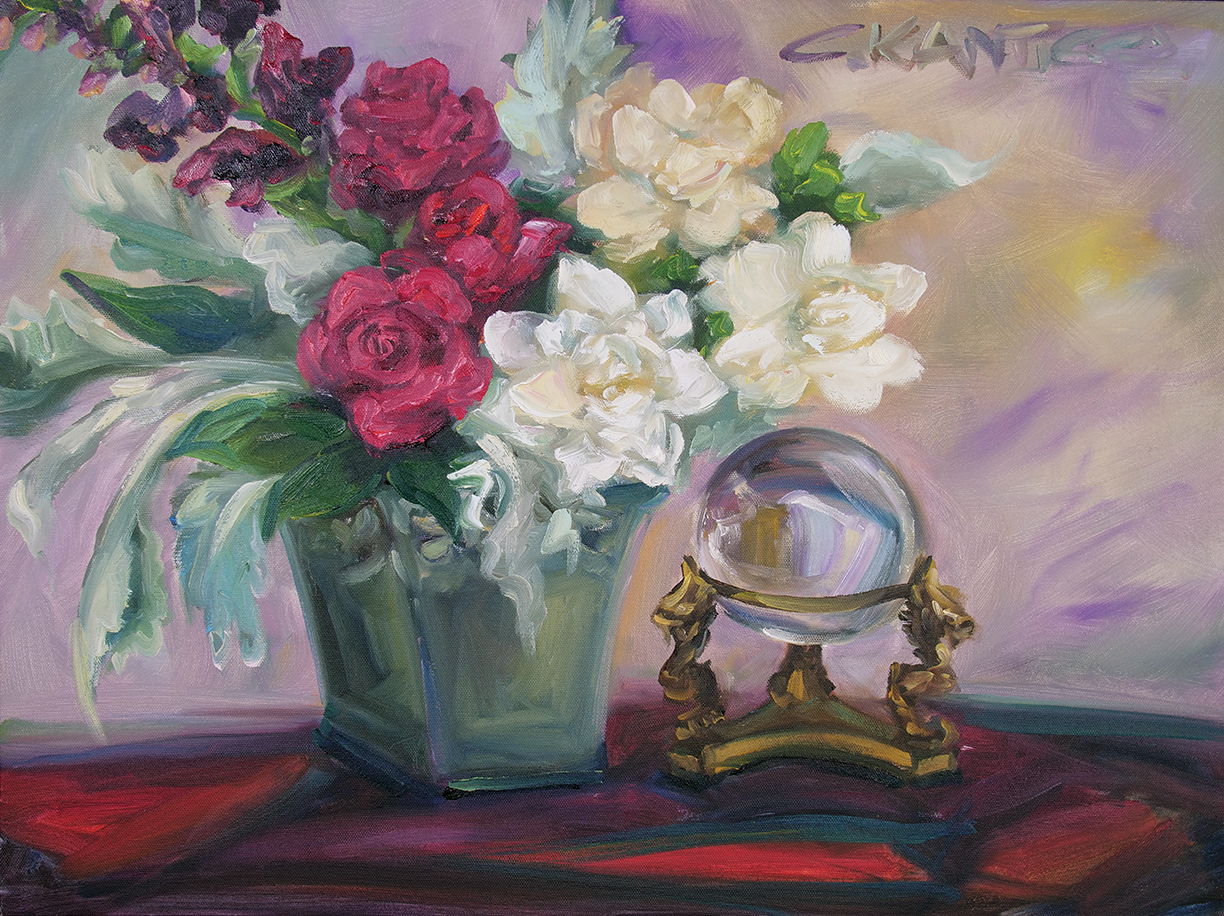
Conjuring Crystal Ball Colors 18 X 24
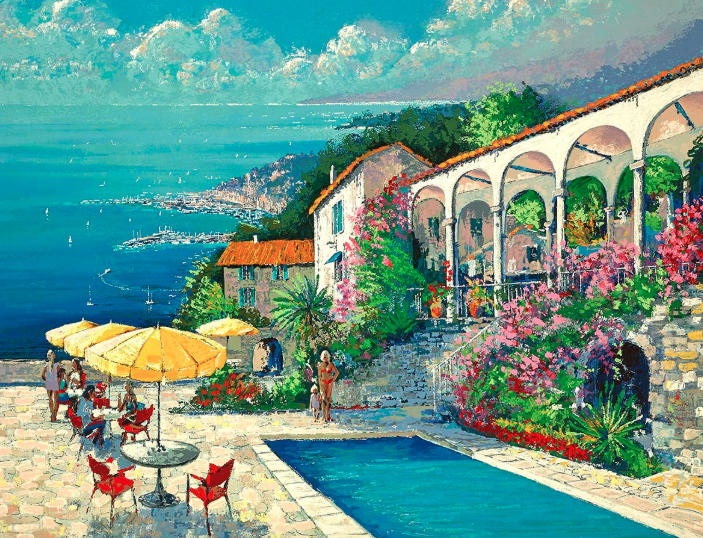
British artist Kerry Hallam captures the essence of luxury living in his bold, timeless paintings. Coastlines and nautical themes are present in many of Hallam’s works, invoking a tranquil mood pervasive in his depictions of shores, sunsets and wharfs.
Hallam, 81, has exclusively painted for Martin Lawrence Galleries — which is famous for its contemporary fine art exhibits that attract collectors to each of its nine locations nationwide — for more than 30 years. His works include acrylic paintings on canvas as well as on nautical charts, and hand-signed, limited edition graphics.
Earlier this year, Hallam presented two special exhibitions at Martin Lawrence’s La Jolla, California location. He participated in a meet-and-greet with art enthusiasts and collectors, encouraging them to relish life’s simple pleasures. Visitors embraced the opportunity to grow familiar with Hallam’s latest works and immerse themselves in the artist’s alluring paintings.
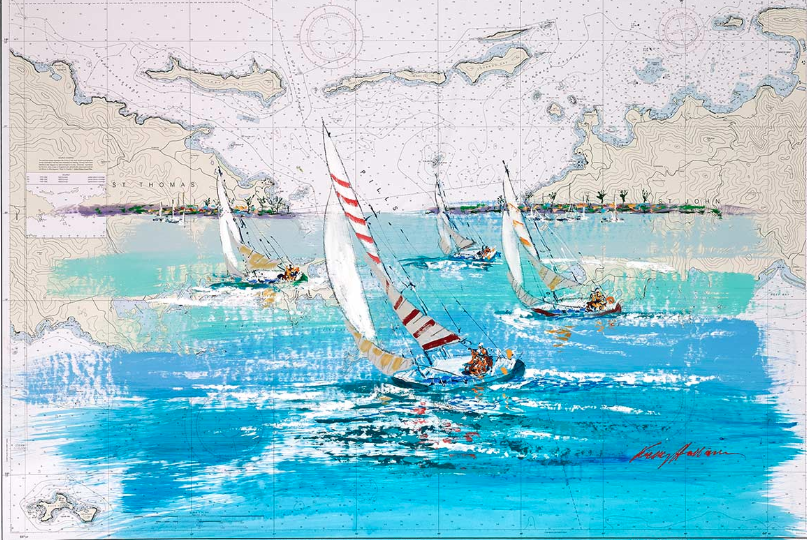
A lifelong traveler, Hallam draws inspiration from the aesthetics of St. Tropez, the French Riviera and the Amalfi Coast. While his acrylics on canvas showcase the raw beauty of coastlines around the globe, his nautical chart paintings offer a new perspective on sea-inspired artwork. By incorporating his inspiration into both the medium and the final product, Hallam sets himself apart from other nautical painters.
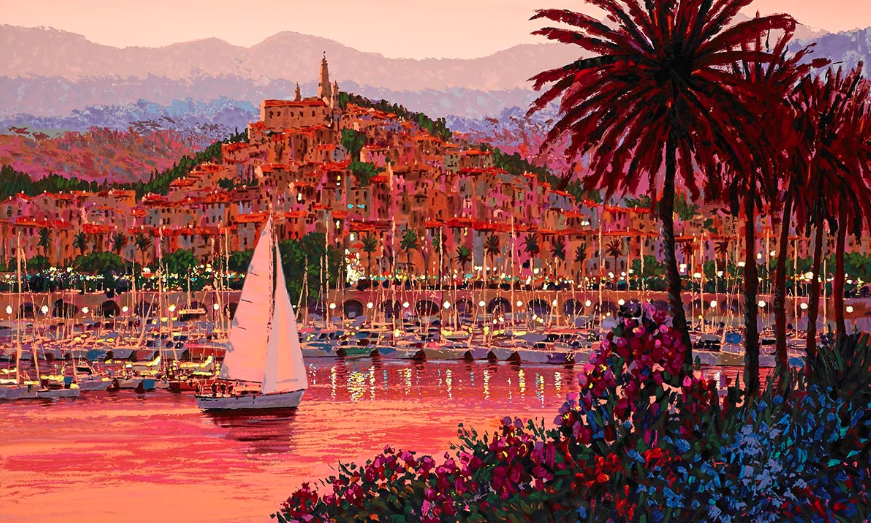
With bold, bright colors that captivate the observer, Hallam’s paintings are a refreshing take on what many artists would choose to keep muted and scaled back. Though his focus remains on the sea, Hallam includes vibrant vegetation and colorful man-made structures in his paintings of coastal scenes.
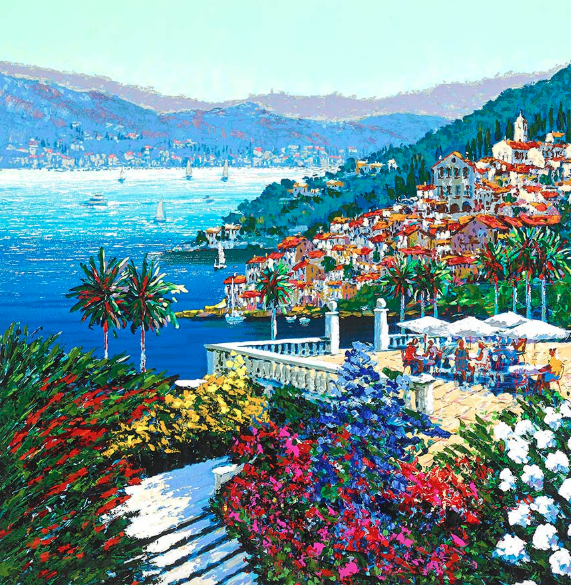
After receiving training from British master painters upon winning a six-year scholarship to London University’s Central College of Art, Hallam was also included in Britain’s Royal Society of Artists in Watercolor. The artist is also inspired by 19th-century French Post-Impressionists, as well as Cezanne and Van Gogh.
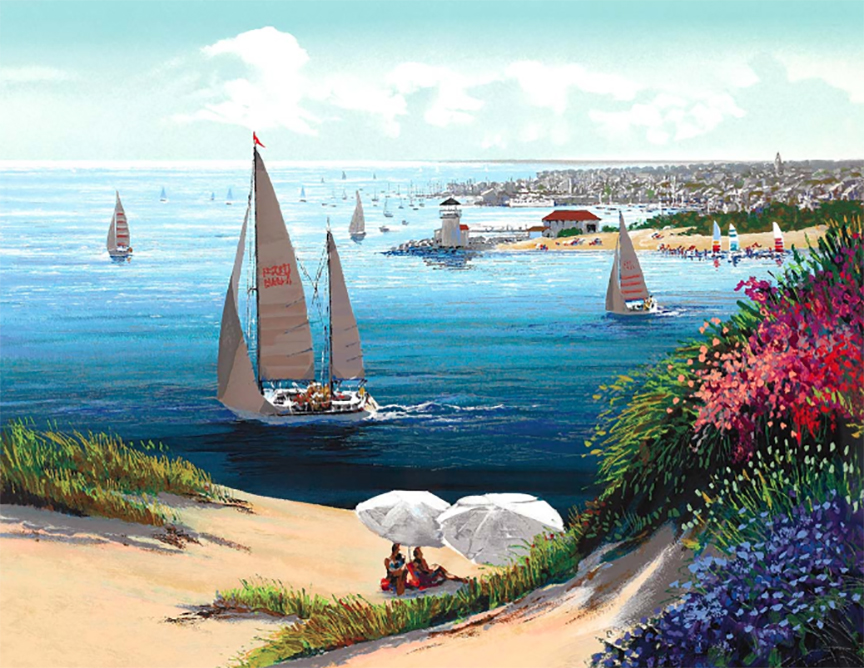
Hallam moved to the U.S. in 1973, and established his first studio in Boston. In 1981, he opened a studio and gallery on Nantucket Island — he has since lived in various places in the U.S., but made the decision to return to New England, where he currently resides.
Photos courtesy of Martin Lawrence Galleries.






